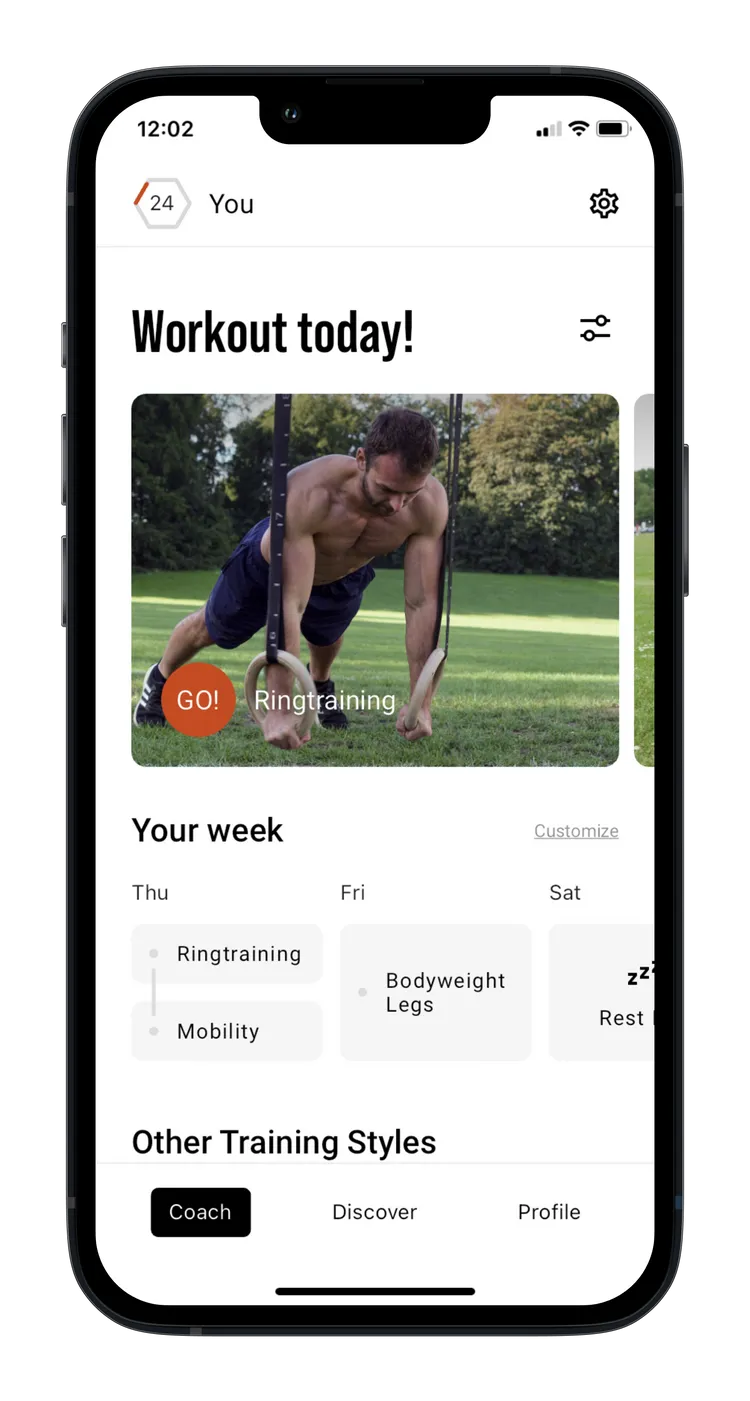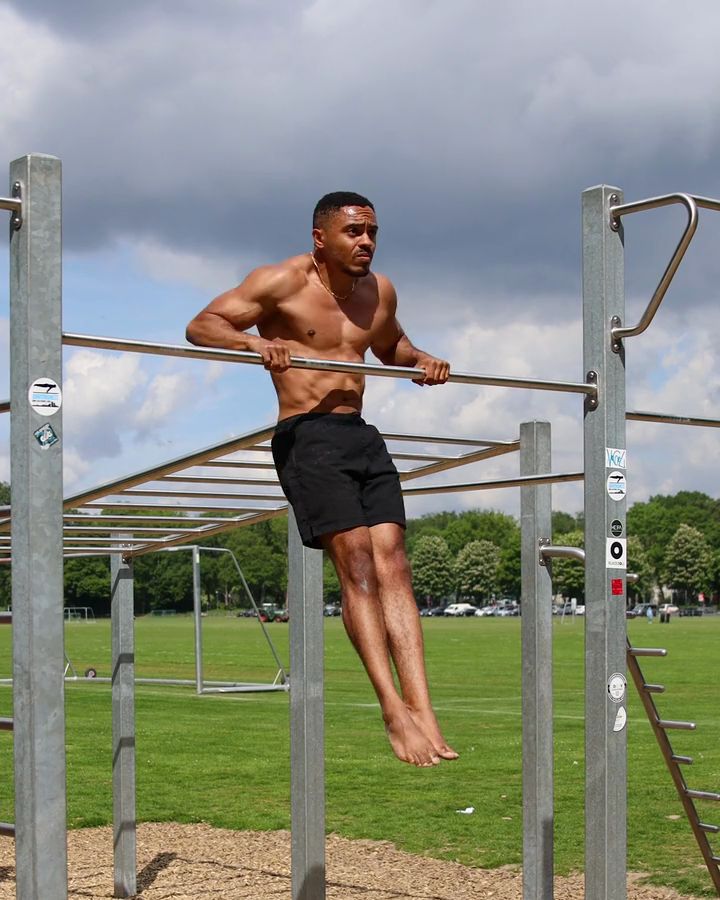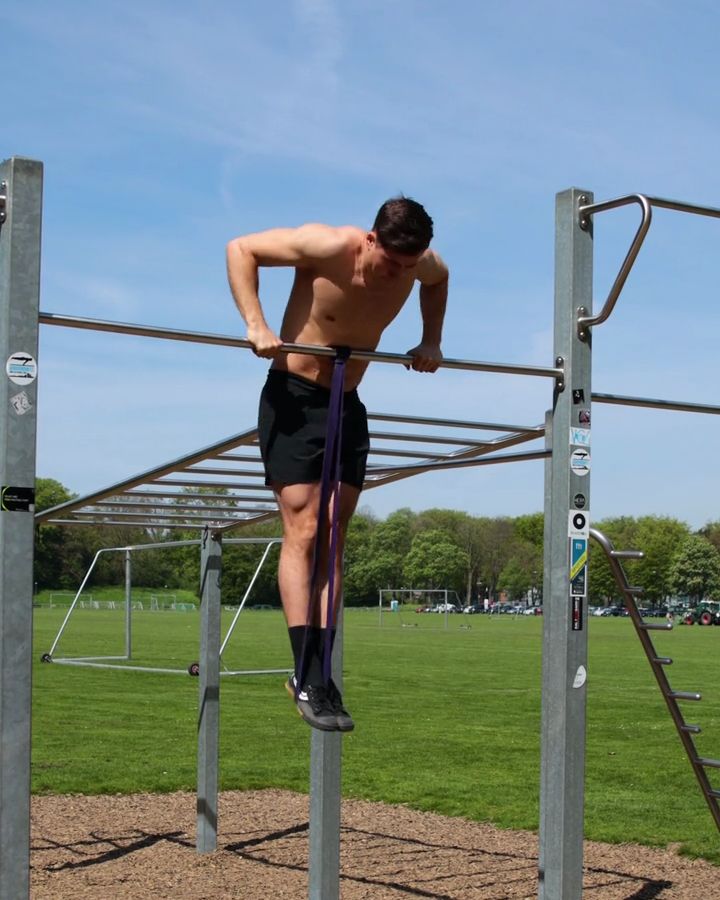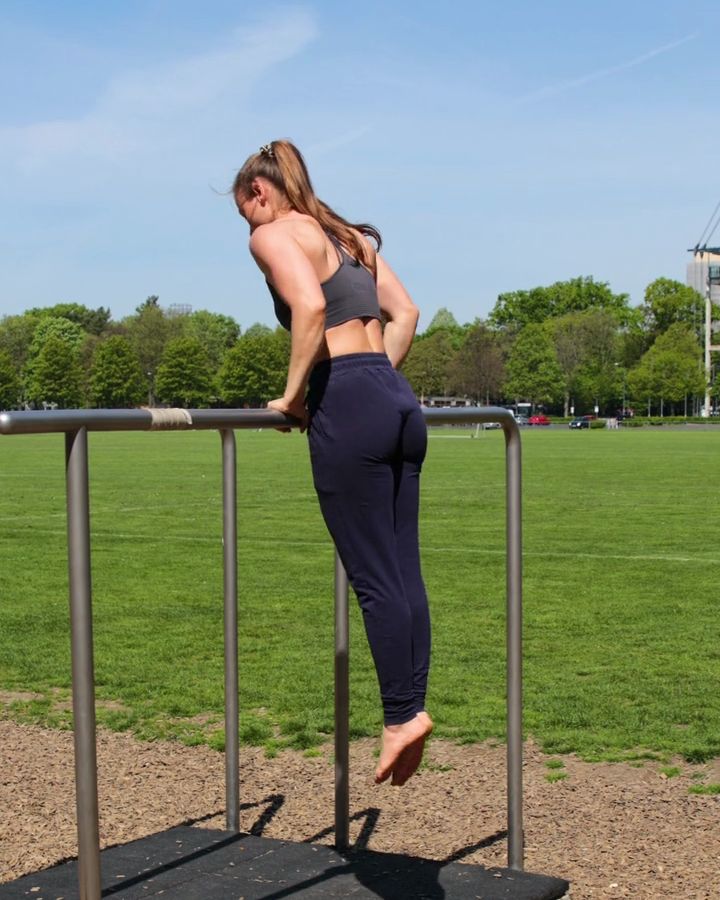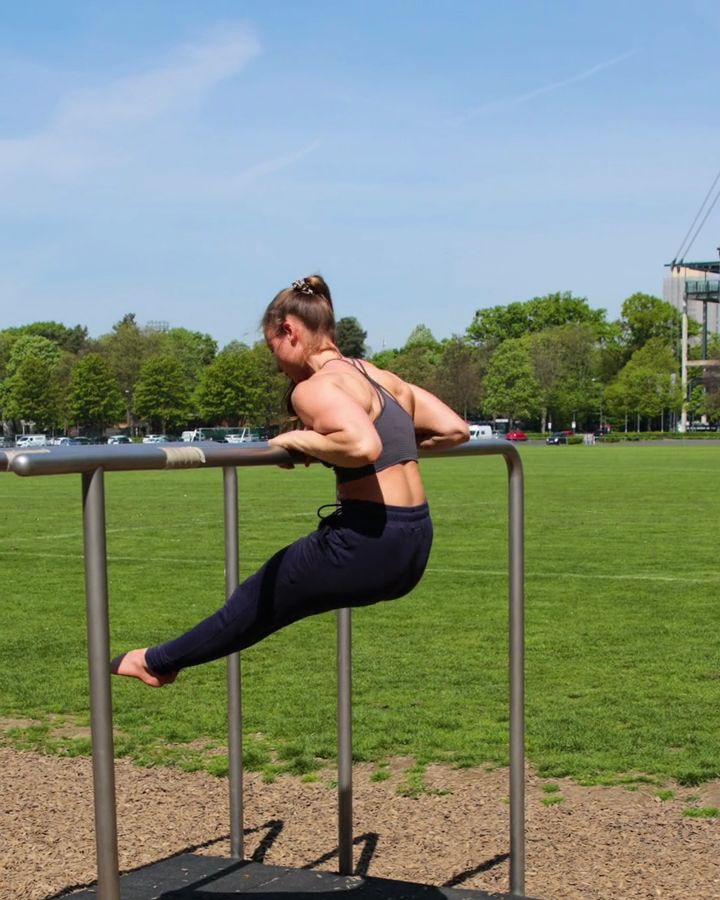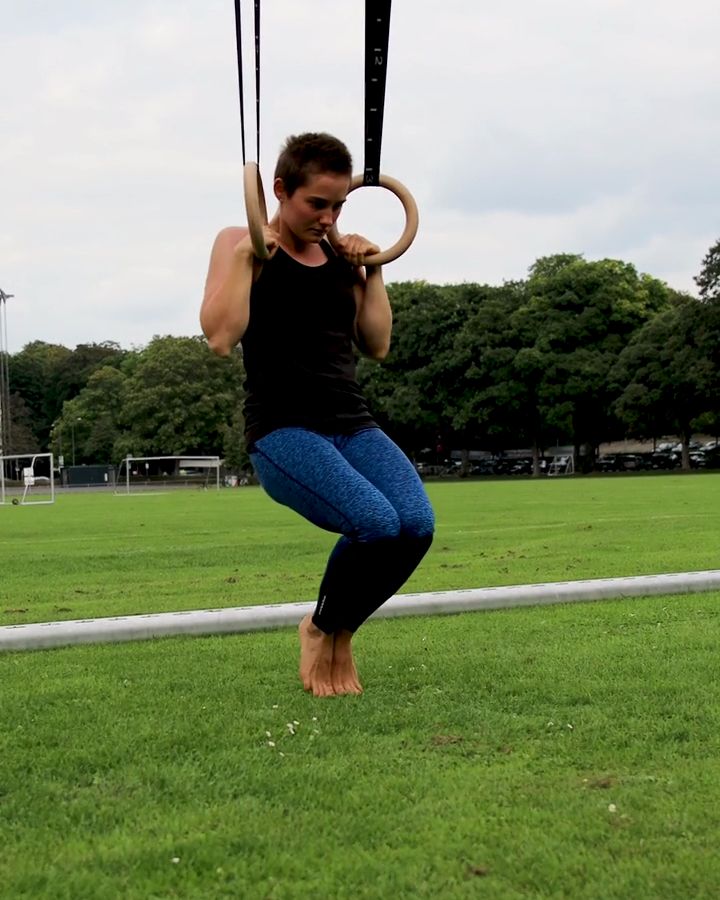Bar Muscle Ups
The bar muscle-up, or muscle-up on the bar, is an advanced exercise where you first pull yourself up to a bar with a pull-up and then push yourself over the bar into a dip. This exercise trains the entire upper body, particularly the back, shoulders, chest, and arms, while enhancing both strength and coordination. It requires explosive pulling power and precise technique to perform the movement smoothly. The bar muscle-up is especially popular in CrossFit and calisthenics for demonstrating body control and strength.
Necessary equipment

Bar Muscle Ups - the correct execution
- Start in hang position
- Grab the bar slightly wider than shoulder width in semi-false grip or instep grip
- Let your body swing slightly forward while tensing your core
- At the pendulum's front turn point, bend your arms and pull your chest explosively towards the bar
- Pull yourself up as high as possible and keep your chest close to the bar
- At the highest point, rotate your wrists so that you are leaning with your hands on the bar
- Lean on the bar with your chest and bring your elbows up
- Press yourself up into the support and stretch your arms completely
- Slowly lower yourself back into the hang in reverse order and in a controlled manner
- If you need to complete multiple repetitions, you can shuttle back and forth once between repetitions or pull yourself up again immediately after a repetition
The exercise Bar Muscle Ups is intended to be used as a technique exercise.
Which muscles are trained by Bar Muscle Ups?












Primary trained muscles for Bar Muscle Ups
Latissimus - The latissimus dorsi is a large muscle in your back that helps you pull your arm down and back. It also supports breathing and stabilizes the spine.
Chest - The pectoralis major muscle is the large muscle on your chest. It helps you bring your arm towards your body and rotate it inward.
Upper Back - The muscles in the upper back, including the trapezius and rhomboid muscles, help move and stabilize your shoulders. They pull the shoulder blades together and support posture.
Secondary trained muscles for Bar Muscle Ups
Triceps - The triceps brachii muscle is located at the back of your upper arm. It extends your arm at the elbow and also helps move the arm backward.
Biceps - The biceps brachii muscle is located on the front of your upper arm. It helps you bend your arm at the elbow, rotate your palm upwards, and lift your arm forward.
Alternative variants of Bar Muscle Ups:
Explosive Bar Muscle Ups
Compared to the classic bar muscle-up, the explosive bar muscle-up requires even greater pulling speed and explosiveness to perform the movement more quickly and powerfully. This progression enhances upper body explosive strength and reactivity, increases the load on the back and shoulder muscles, and simultaneously trains the ability to dynamically propel the body over the bar.
Necessary equipment

Explosive Bar Muscle Ups - the correct execution
- Start in hang position
- Grab the bar slightly wider than shoulder width in semi-false grip or instep grip
- Let your body swing slightly forward while tensing your core
- At the pendulum's front turn point, bend your arms and pull your chest explosively towards the bar
- Pull yourself up as high as possible and keep your chest close to the bar
- At the highest point, rotate your wrists so that you are leaning with your hands on the bar
- Lean on the bar with your chest and bring your elbows up
- Press yourself up into the support and stretch your arms completely
- Slowly lower yourself back into the hang in reverse order and in a controlled manner
- If you need to complete multiple repetitions, you can shuttle back and forth once between repetitions or pull yourself up again immediately after a repetition
Banded Bar Muscle Ups
The band-assisted bar muscle-up reduces the required pulling strength by providing support, allowing the technique and strength needed for the classic bar muscle-up to be gradually developed. It still trains the upper body but allows for a more controlled execution.
Necessary equipment


Banded Bar Muscle Ups - the correct execution
- Start in hang position with one foot in the Resistance Band Heavy (Purple)
- Grab the bar slightly wider than shoulder width in semi-false grip or instep grip
- Let your body swing slightly forward while tensing your core (Hollow Body Position)
- At the pendulum's front turn point, bend your arms and pull your chest explosively towards the bar
- Pull yourself up as high as possible and keep your chest close to the bar
- At the highest point, rotate your wrists so that you are leaning with your hands on the bar
- Lean on the bar with your chest and bring your elbows up
- Press yourself up into the support and stretch your arms completely
- Slowly lower yourself back into the hang in reverse order and in a controlled manner
- If you need to complete multiple repetitions, you can shuttle back and forth once between repetitions or pull yourself up again immediately after a repetition
Similar exercises to Bar Muscle Ups
Jumping Bar Muscle Ups
Jumping Bar Muscle-Ups are a dynamic preparatory exercise for learning the classic Muscle Ups. The jumping component in this variation helps initiate the movement with power and makes the transition from the pulling to the pushing phase easier. This exercise is especially useful for beginners working on their transition to the full muscle-up technique.
Negative Bar Muscle Ups
Negative Bar Muscle Ups are an excellent preparatory exercise for the Bar Muscle Up. You jump from a standing position to get into the top position on the bar, then lower yourself slowly and with control. This exercise is often combined with explosive pull-ups. Together, these exercises form the most important foundation for effectively learning the Bar Muscle Up.
Negative Ring Muscle Ups
Negative ring muscle-ups focus on the eccentric part of the classic ring muscle-up. By taking advantage of the fact that we’re stronger during the lowering phase than the pull-up, this movement can be practiced even before achieving a full muscle-up. The exercise allows targeted training of the negative phase, building strength and helping to learn the complex movement sequence. It strengthens the back, shoulders, and arms and is an excellent precursor to the full ring muscle-up. Compared to negative ring dips, this exercise incorporates the transition, which particularly challenges shoulder mobility and strength.
This could also be interesting
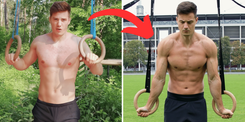
Calisthenics Body Transformation – How to Build a Strong, Lean, and Athletic Physique
Transform your body with Calisthenics! Build muscle, burn fat & achieve a shredded physique with bodyweight training. See real before & after results!

The Best Fitness Apps in 2025: Our Top 10 Recommendations
Don’t miss the best fitness apps of 2025: surprising favorites, free options, and perfect tools for your workouts. Find the ideal app today!
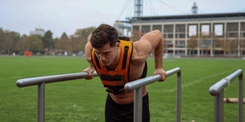
Complete Calisthenics Skills List – 40+ Exercises from Beginner to Pro
Which calisthenics skills should you learn first? And which ones will really help you progress? In this article, you’ll find a complete list of over 40 exercises – from the very basics to the toughest moves for professionals. Each exercise comes with instructions, so you can immediately integrate them into your training.

